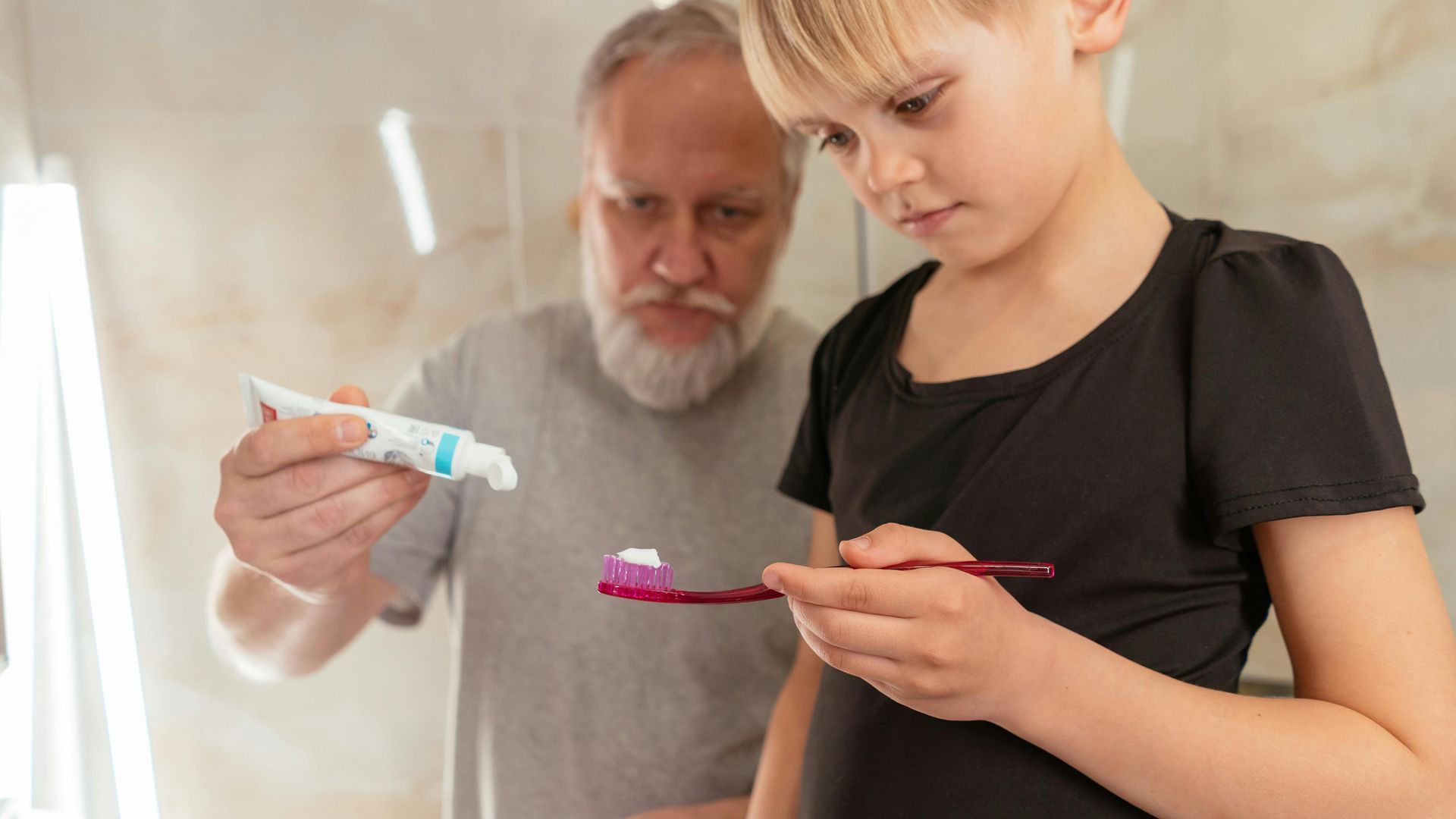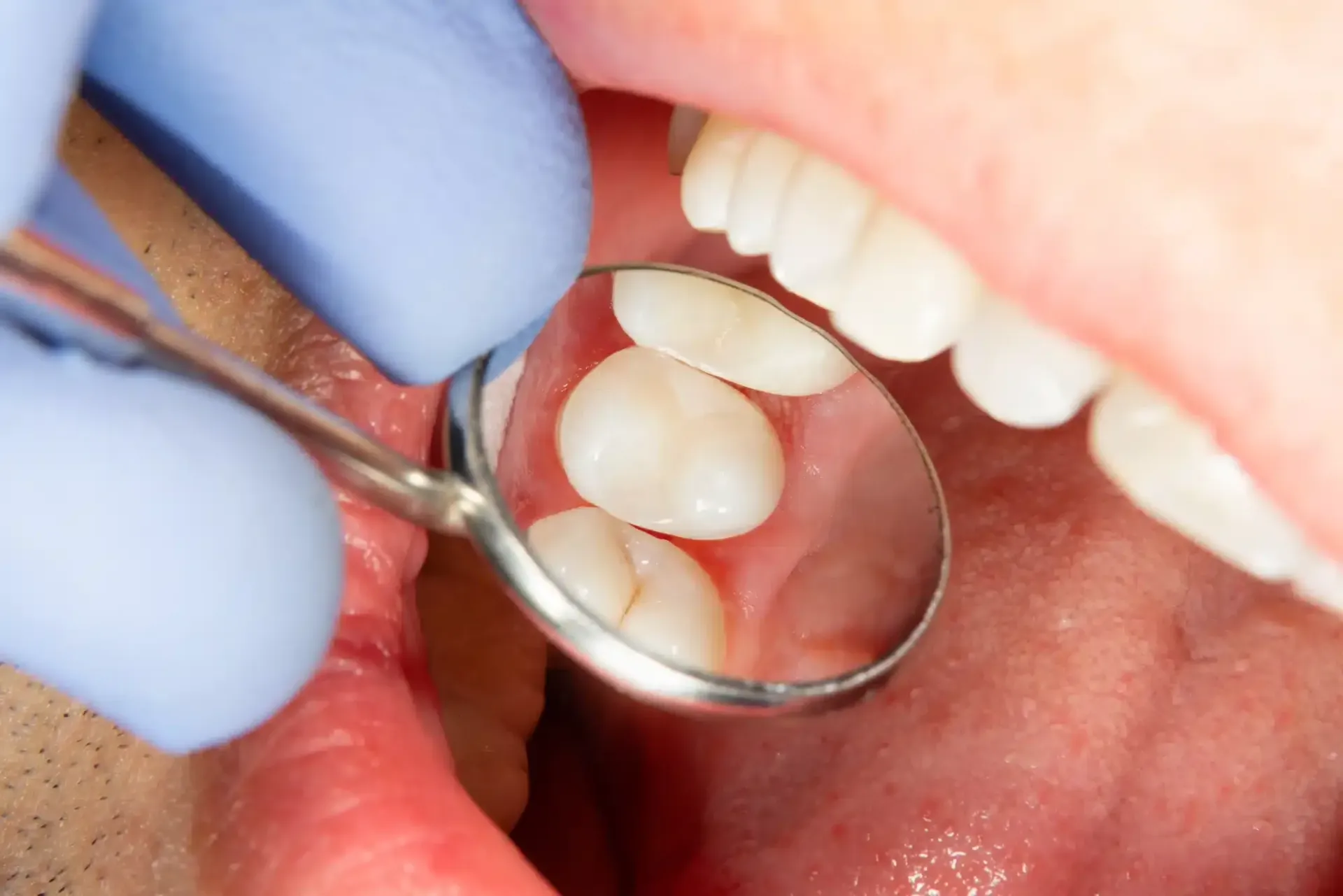
If you are concerned about your overall health and that of your family, and you believe that natural products and services are vital to one’s health, then full body health dentistry just may be the right option for you. Full body health dentistry, sometimes called biological, biocompatible, natural or integrative dentistry is certainly not a new approach to dental care. Nearly forty years ago (in 1978), the Holistic Dental Association was formed by a group of concerned, dedicated dentists interested in the development and sharing of long established and health-promoting treatment options. These were modes of dental treatment not included in western dental schools’ curriculums. These founding member dentists believed that most dental problems could be corrected and improved all while working in harmony with the body as a whole. Full body health dentistry recognizes the important connection between the health of the mouth and that of the entire body (as established by traditional medical research studies). This natural, comprehensive approach concentrates on the whole body health of the patient and not just the condition of the teeth and gums. The full body health dentist, when caring for a diabetic patient for example, will help that patient understand the best practices for home and dental office oral hygiene care and how, by following a healthy diet and exercise program, he or she can manage blood sugar levels best. The full body health dentist may work in tandem with other like-minded health professionals such as Naturopaths, Chiropractors, Acupuncturists, and Osteopaths in an integrative approach to ensure the highest level and most sustainable results. While dentists everywhere focus on dental health and the treatment of oral disease, not all dentists also focus on their patients’ whole body or general health. And, as more and more people seek out more natural health care options, full body health dentistry presents itself as a healthy comprehensive health care alternative with the perfect blend of modern dentistry and natural healing methods.

People often ask questions like: “what’s the difference between a full body health dentist and a traditional dentist?” or “how similar is a full body health dentist to a traditional dentist?” All dentists receive the same basic education and training in dental school, that is, the same theory and the same methods of practice to become what is commonly known as a ‘general’ dentist. Some of these general dentists may have further developed, through continuing education courses and training, a subspecialty like: family dentist, cosmetic dentist or full body health dentist. A full body health dentist offers conventional and complementary dental care. Unlike a traditional dentist, who may focus on one particular tooth or gum problem, the full body health dentist focuses on an individual’s whole body health. By identifying underlying imbalances in the body, a full body health dentist safely and effectively treats the problem with a combination of natural remedies and modern dental treatment. The full body health dentist is keenly aware of the best, most comprehensive long-term treatments necessary for restoring a patient’s oral and, ultimately, total health. Like that of a traditional dentist, a full body health dentist’s approach to care can vary from practice to practice. Following are a few differences between a full body health dentist and a traditional dentist: The full body health dentist refrains from using materials that many people feel are inferior. Materials such as silver mercury (amalgam) fillings may, according to the IAOMT , lead to a metallic taste, mouth ulcers, gum or other problems in some people. Rather, the full body health dentist only uses what he/ she believes are safer, more biocompatible materials. The full body health dentist may consent to a patient’s desire to have older, deficient fillings removed, especially if they exhibit an established sensitivity to that material. If so, they would do so with a safe, controlled procedure that minimizes the patient’s exposure to potentially harmful by-products. The full body health dentist typically uses only digital x-ray systems thereby reducing emitted radiation by, in some cases, as much as 80% over traditional x-ray systems. The full body health dentist approaches the need for root canal therapy with increased scrutiny and investigation. Root canal therapy is seen, in many cases, as a comforting yet transitional mode of treatment. The full body health dentist is aware that a tooth treated with root canal therapy may exist in a weakened state and, in cases where the root canal therapy on a tooth is failing, may expose the patient to recurrent, yet localized infections. The full body health dentist is sensitive to some patients’ concerns over certain in-office anti-cavity treatments and, then, may suggest a more natural alternative or herbal remedy. All Ontario dentists, regardless of their practice orientation, are required to separate waste amalgam (as a source of mercury) from their municipality’s wastewater. Beyond that, the full body health dentist is very environmentally conscious and responsible. The full body health dentist creates an office environment that is safe, biocompatible and minimally invasive to prevent potentially harmful effects on patients and dental personnel alike. When choosing between dentists, whether full body health or traditional, it is very important to select one whose philosophy on health complements yours.

Before you buy that next tube of toothpaste you may want to check out the wide range of ingredients it may contain. But first… a short history on DIY teeth cleaning: Archaeological finds tell us that ancient Egyptians scrubbed their teeth with a combination of ox-hoof ashes, burnt eggshells and sand as far back as 5000 BC. Later, Romans are known to have used a combination of crushed ox bones and oyster shells, powdered charcoal and crushed tree bark. And, as recently as the 1700s, the citizens of England were using brick dust and crushed china in their teeth cleaning powders. Ingredients in Present Day Toothpaste Abrasives: These are basically particles which make the action of tooth-brushing more effective. Your toothpaste may contain Silica (made from sand), Alumina (natural or synthetic), Calcium Carbonate (from limestone or shellfish), or Dicalcium Phosphate (synthetic). None of these compounds would have any cleaning effect on the teeth, whatsoever, without the mechanical action of an accompanying toothbrush. Detergents: These create the ‘foaming’ effect and are another cleaning ingredient in toothpaste. They work to dissolve, loosen or breakdown substances on your teeth (plaque, tartar, and stains) so that they may be brushed and rinsed away more easily. Until recently, the most common detergent in toothpaste has been the synthetic compound Sodium Lauryl Sulfate (SLS) which, according to the American Dental Association, can cause increased gum irritation in people prone to mouth canker sores. SLS is definitely an ingredient of concern for many people and an increasing number of toothpaste formulations do not contain SLS. Fluoride: First introduced into toothpaste in 1914, it is arguably its most controversial ingredient. Manufacturers of toothpaste explain that Fluoride strengthens tooth enamel thereby making teeth less susceptible to cavities. True, but opponents of Fluoride argue that its negative effects on whole body health, especially the thyroid gland, far outweigh the purported enamel-strengthening benefit. Deemed a ‘medicinal’ ingredient, you will find Fluoride in toothpaste in the form of Sodium Fluoride, Stannous Fluoride or Sodium Monofluorophosphate (all synthetic). Fluoride containing toothpastes do not need a preservative as Fluoride also inhibits bacterial growth. Humectants, Binding Agents and Preservatives: The combination of these ingredients in toothpaste retains moisture and prevents the toothpaste from separating (as paint does), thereby preventing the need for stirring or kneading before each use. The most commonly used humectants are Glycerol (from animal sources or petroleum based oils), Propylene Glycol (chemically derived), and Sorbitol (from chemical or natural sources). Typical binding agents are Carrageenan (seaweed gum), Gum Arabic (sap from the Acacia tree), and Sodium Caboxymethylcellulose/ Magnesium Aluminum Silicate (both synthetics). Typically, preservatives used in non-fluoride containing toothpastes are Sodium Benzoate (synthetic), Methyl Paraben, or Ethyl Paraben – all gentle antibacterial or anti-fungal agents commonly used in foods, beverages, cosmetics and body care products. The parabens, as they are commonly known, can occur naturally though it is their more widely-used synthetic preparation from petrochemicals which concerns people, like Dr. David Suzuki , most. Triclosan, another controversial antibacterial ingredient, has just recently been banned, along with 18 other chemicals, by the FDA (in Sept. 2016) over fears that it will create antibiotic resistant strains of bacteria in some people. This order, however, does not take effect until Sept. 2017 so be sure to read the toothpaste label before purchasing, especially if it’s being offered up in large quantities at the dollar store or deeply discounted or “ON SALE” at your local drug or grocery store! Whitening or Bleaching Agents: These are either abrasives, like Silica and Mica (natural sources) present in greater amounts in ‘whitening formula’ toothpastes, that help to rub off stains like coffee and red wine… OR they are enzymes, like Glucose Oxidase and Lactoperoxidase (natural and synthetic respectively) that break down the protein in stains like tannins in wine. Anti-Tartar Agents: Agents like Tetrasodium Pyrophosphate (synthetic) have shown to prevent the formation of tartar, however they have no effect on existing tartar; a common misconception amongst toothpaste buying consumers. Sensitivity-Reducing Agents: Agents such as Potassium Nitrate or Strontium Chloride (both synthetics) basically plug up the open-ended microscopic tubules which make up the dentin of a tooth that has become exposed by gum recession or erosion of the outer enamel of the tooth. Like fluoride, these compounds are considered to be the other ‘medicinal’ ingredient in toothpaste. Flavouring Agents: Toothpaste would taste pretty blah if we did not, at least, neutralize the tastes associated with all of the above ingredients, especially the preservatives. For this reason you will always find various natural and artificial flavourings and sweeteners such as Saccharin, Aspartame, or Xylitol – each one of these having their own specific concerns amongst consumers. Colouring Agents: These are chemicals, artificial dyes actually, which add the visual appeal to toothpaste. Their formulas are proprietary and examples include Blue 1 and Green D&C#5. Titanium dioxide, another synthetic, is used to colour some toothpastes white. So, now that we’ve all “brushed up” on the facts as to what’s in toothpaste… are you even more confused than before? Well, if you are then I’d certainly understand. I had no idea myself just how many and how ‘different’, sometimes startling, ingredients can be found in the leading toothpastes. Colgate’s new Enamel Health formula, for example, contains some 20 different ingredients. And of those 20 ingredients only two, Fluoride (NaF) and Potassium Nitrate, are deemed ‘medicinal’ ingredients. Everything else, then, is non-medicinal ‘filler’ AND the non-medicinal ingredients outscore the medicinal ingredients by a ratio of 9:1! Who knew?

Many of our patients are very mindful of their whole body health. They are knowledgeable and aware of exactly what goes in or what goes on their body. Nothing happens by accident as to the foods they eat, the clothes or cosmetics they wear, the exercise they partake in and even where they shop. So, inevitably, when the topic of tooth-coloured fillings to replace their old mercury fillings comes up, they may have a lot of questions. Rightfully so because, just as there is a wide variety of techniques used by dentists to remove those old mercury fillings, the types of tooth-coloured fillings placed in modern day dentistry vary considerably. This is especially a concern for our patients who have known or suspected biocompatibility issues to dental or other materials. Tooth-coloured fillings or composite fillings, as they are known in dentistry, are just one of the few options available to restore teeth previously filled with mercury fillings. There is, of course, the option of placing yet another mercury filling but there are still other options such as placing a gold, ceramic (porcelain), or glass ionomer filling, to name a few. Many patients choose the composite type of filling because the white colour best matches the tooth itself and the cost for placing these fillings is considered moderate. Also, these composite fillings do not contain mercury which is a desirable quality being realized by more and more Canadians every day. In addition, a recent scientific research study involving over 76000 patients showed that composite fillings had a much longer lifespan than the earlier style mercury fillings. ¹ But, are all white, tooth-coloured or composite fillings created equal? Essentially… NO. Composite fillings are a concern for some people because many of them contain that controversial material BPA (bisphenol-A) or other types of bisphenol such as Bis-GMA and Bis-DMA. BPA, by any name, is a concern for some over fears that it interferes or mimics hormones which make up one’s endocrine system. Still others feel that it impairs psychosocial functions in children ² . You may be aware that the FDA (2012) imposed a strict ban on BPA in baby bottles, “sippy” cups and infant formula packaging over these very same concerns ³ . As composite fillings age and wear down, a process known as “leaching” occurs where, in effect, free BPA is released into the saliva. Even though no studies exist that measure the amounts of BPA released from those composite fillings, for most people any BPA exposure is concerning. Patients who are concerned about the ingredients in any dental material (or the safety of the dental materials we ourselves use at Speedvale Dental Centre) should seek out the opinion of Dr. Fox prior to initiating treatment. For those patients with a suspected dental material compatibility issue we have sophisticated testing techniques available at our office to aid in finding out more information on that very subject. References: 1. Longevity of Direct Restorations in Dutch Dental Practices 2. Dental Composite Restorations and Psychosocial Function in Children 3. Bisphenol A (BPA): Use in Food Contact Application

Most of us would agree that the dentist’s office is no-one’s favourite place to be. E-v-e-r. Patients’ dental anxiety is real. In fact, research suggests that anywhere from 13% to 24% of the general population in North America has some level of dental anxiety (1)(2)(3)(4). It is very important to Dr. Fox that his patients have fulfilling, comfortable and anxiety-free dental visits.… Here we’ve put together a list of simple, natural ways for patients to help relieve their own dental anxiety. It is based on decades of first-hand patient experiences at Speedvale Dental Centre. A collaborative effort, the collection is put together by Dr. Fox, many of his patients, and his dental team at Speedvale Dental Centre. We hope you find some of these suggestions helpful in relieving your own dental anxiety: Plan ahead and sleep well the night before your dental office visit Practice slow or ayurvedic breathing Get a massage before your dental office visit Watch what you eat beforehand – high protein foods like salmon, avocados, and yogurt have a calming effect Watch what you drink beforehand – avoid caffeine which can make you ‘jittery’ Do aromatherapy beforehand Meditate / practice mindfulness – relaxation starts in the mind Do progressive muscle relaxation training – forehead, cheeks, jaw, neck, shoulders… Massage your jaw muscles when there is even a brief pause in your dental treatment Rub mint oil on the back of your neck – it’s relaxing and neutralizes that sterile “dental office smell” Bring along a friend or family member for moral support Enjoy a cup of an herbal tea blend beforehand to calm your nerves and relax your jaw and neck muscles References: (1) White A, Giblin L, Boyd L, The Prevalence of Dental Anxiety in Dental Practice Settings: American Dental Hygienists Journal. 2017;91(1):30-34. (2) Armfield JM, Heaton LJ. Management of Fear and Anxiety in the Dental Clinic: A Review. Aust Dent J. 2013: 58 (4):390-407. (3) Vanschaayk MM et al. The Prevalence of Dental Anxiety and its Association with Pain and Other Variables Among Adult Patients: BMC Oral Health. 2018; 18:101-113. (4) Tellez M, Kinner DG, Heimberg RG, Lim S, Ismail AI. Prevalence and Correlates of Dental Anxiety in Patients Seeking Dental Care. Community Dent Oral Epidemiol. 2015; 135-142.
